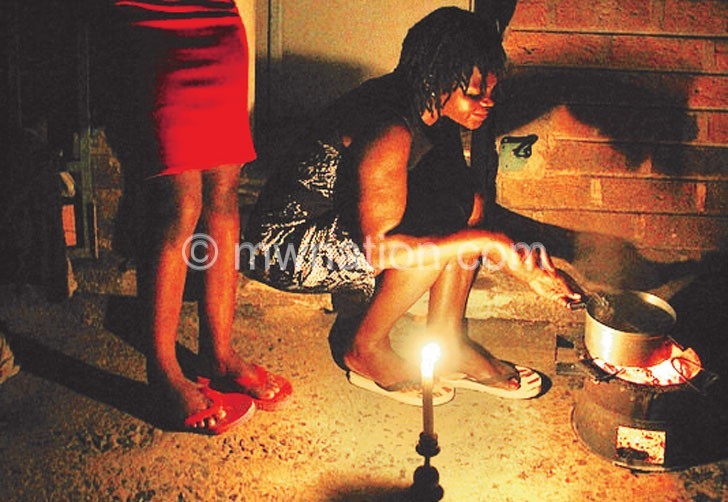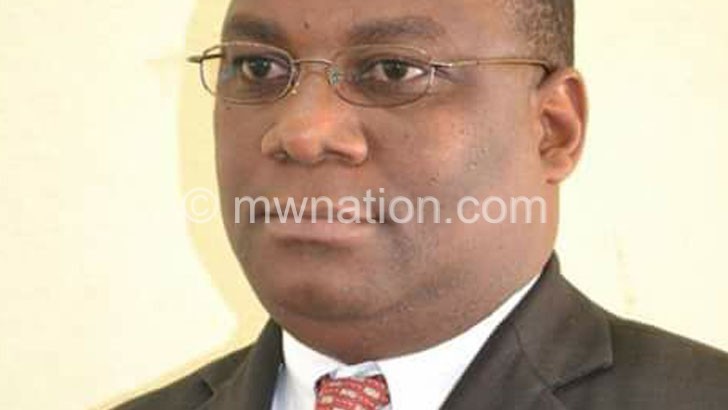Energy crisis: Who is lying?
Two State energy players have given contradictory details on the current electricity generation output through hydro-electricity, dampening hopes of relief for consumers enduring long hours of power rationing.
Electricity Supply Corporation of Malawi (Escom) yesterday contradicted an earlier statement by Electricity Generation Company (Egenco) that the onset of the rains has boosted hydro-electricity generation capacity to between 200 and 210 megawatts (MW).

In a written response to a questionnaire on what the boost in generation capacity and the 20MW power tapped through the interconnection with Zambia switched on this week will mean to consumers facing at least nine hours of load shedding, Escom public relations manager Innocent Chitosi said the power utility has been getting 188MW from Egenco.
He said Escom is buying all the power available on the market.
Chitosi was non-committal on the impact on load shedding hours, but said the 20MW from Zambia would contribute to easing supply challenges.

He said: “The impact [of the Zambian power interconnection] is that the power that was being supplied to Mchinji, parts of Kasungu and Lilongwe will now be available for supply to other areas of the country. This will lessen the burden on the national grid.
“The average power that we have been getting from Egenco for this month [December] has been 188MW and we are buying all the power that is readily available.”
Escom’s assertion that it is getting 188MW contradicts what Egenco spokesperson Moses Gwaza told The Nation in yesterday’s edition that the rains, especially in the Southern Region, have boosted generation capacity to between 200MW and 210MW.
Gwaza last evening reiterated that their generation capacity has increased.
He said: “As we said, the onset of the rains have indeed improved power generation from around 180 to an average of 200 to 210 MW.
“As I am writing to you now, the power update is showing that we are selling Escom 197.65MW from hydropower stations and 6.96MW from the diesel generators. If you combine the two, that should give about 205MW.”
But Gwaza said the figures keep changing depending on the water levels and the demand on the system.
“On power losses, Escom is better placed to explain since they are the ones managing the transmission and distribution where losses exist,” he said.
Malawi’s installed electricity demand is pegged at 350MW.
In August this year, Minister of Natural Resources, Energy and Mining Aggrey Masi led a delegation to Zambia to sign the 20 MW power supply agreement through Zambia Electricity Company (Zesco), which is earmarked to ease power challenges that the country has been experiencing.
The five-year power supply agreement was supposed to start in September, the minister was quoted as having said on Escom’s official website.
But in a follow-up statement on October 24 this year, Escom said the power supply project would be commissioned on November 2 this year as their counterparts from Zesco were working on final touches on technical aspects on the 33 kilovolt connection line.
However, the commissioning of the deal took place at Mwami border in Mchinji on Monday this week.
Earlier last month, Escom painted a gloomy picture for the country’s power situation, leading to the extension of load shedding schedule from six hours to at least nine hours per day, with some areas experiencing even longer hours.
Escom chief executive officer Allexon Chiwaya is on record as having said Malawi is facing acute power supply challenges due to the reduction in water levels in Lake Malawi, a situation which affected the country’s main electricity generation.
He said subsequently, power generation capacity had reduced to around 216 megawatts (MW), including input from diesel-powered generators installed in the country’s three cities.
Chiwaya said Egenco, Escom’s main supplier, was producing 177MW through its hydro source while 38.4MW was from diesel generators which run for six hours a day.
He said: “We are buying all the power generated in the country. Unfortunately, all that power is from hydro generation through Egenco and because Shire River flow is getting reduced due to reduced water levels, the country is unable to produce the power.”
This means that with additional power from Agrekko generators and 20MW from Zesco, Malawi has over 250 MW of power in its power grid leaving it with a deficit of only 100MW.
During the launch of a 60MW solar energy plant by an independent power producer (IPP) in Salima, President Peter Mutharika pleaded for more patience from Malawians hard hit by unreliable power supply that has slowed economic growth and negatively affected service delivery in various sectors, including health.
He said his administration was working on several long-term projects to improve power supply. The initiatives include diversification from reliance on hydro-electricity to other sources such as solar and Kam’mwamba coal-fired plant.





